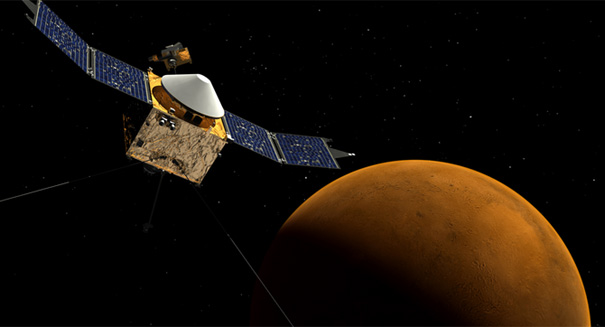
NASA's MAVEN is now beaming back data from the initial phase of its mission.
The latest Mars spacecraft has begun sending information back to Earth and is setting high expectations for the rest of its mission.
This NASA orbiter, built for the Mars Atmosphere and Volatile EvolutioN mission (MAVEN), entered orbit around the red planet on September 21 and has already produced some of the most complete atomic maps of the Martian atmosphere ever made. The MAVEN spacecraft was designed to help understand how the warm, wet Mars of the past became the dry, cold planet of today.
Currently, the MAVEN mission is in its “commissioning phase”, which means it has yet to start collecting data full time. So for the last few weeks controllers on the ground have been merely turning on and testing the instruments on board. Just during this initial testing phase MAVEN has managed to produce some of the most detailed data ever gathered about the upper Martian atmosphere, even observing some particles from a solar eruption that made it all the way to the planet.
“What we’re seeing so far is really just a tantalizing teaser of what’s to come,” said MAVEN principal investigator Bruce Jakosky during a NASA news conference October 14.
Right now controllers on the ground are busy moving the craft into a lower orbit so it can make more detailed observations of the Martian upper atmosphere, and hopefully find out whether or not some of it may be escaping into space. According to NASA, the MAVEN probe is estimated to begin its full scientific mission in about two weeks.
In the meantime, NASA’s small fleet of Martian craft on and around the planet is poised to observe the Siding Spring comet as it makes a close flyby of the planet on October 19. The $671 million MAVEN should be able to see how the comet’s flyby, at 87,000 miles away, might affect the Martian atmosphere.
Leave a Reply